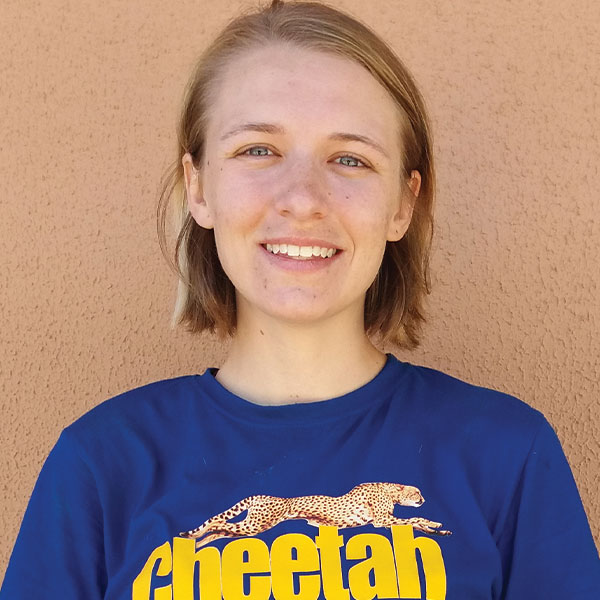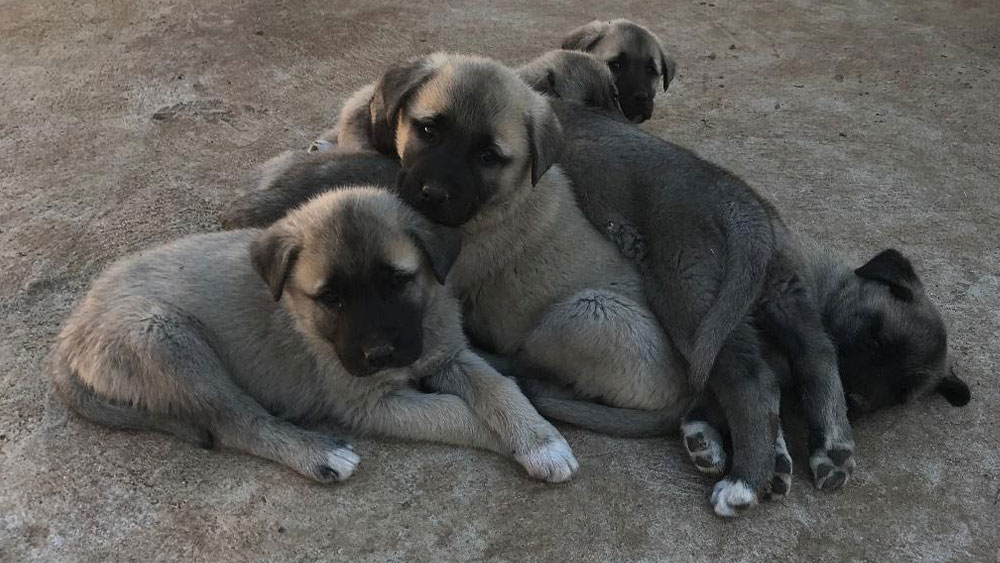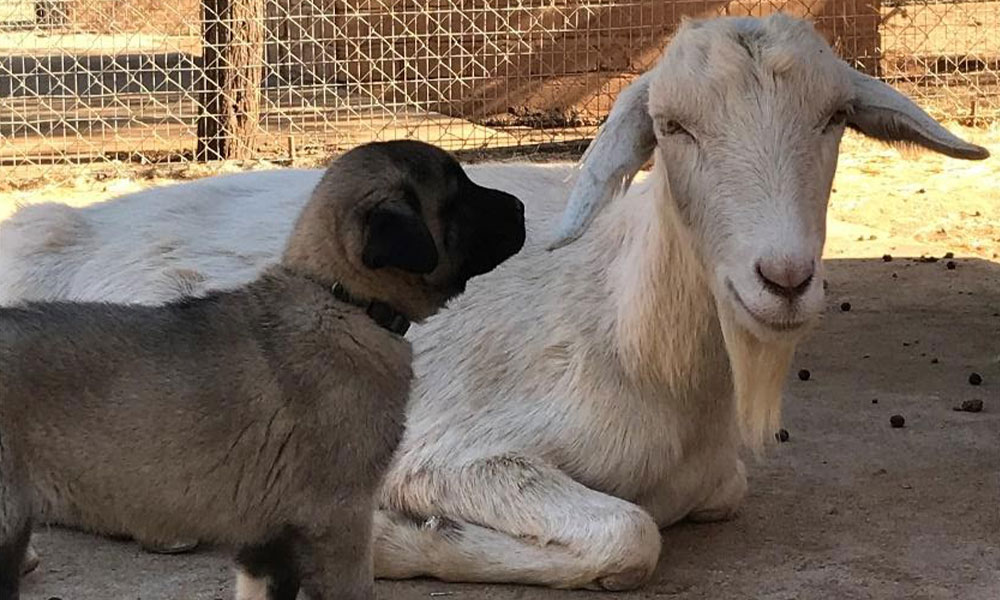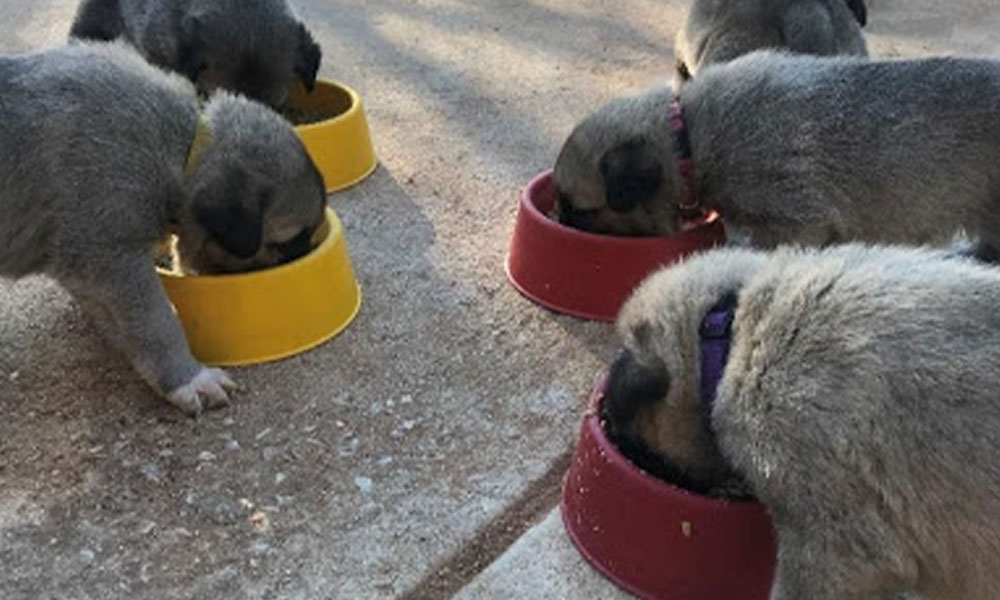Stuck in Namibia! Wildlife, Goats and PUPPIES!!
-

- by Sophie Richnak September 9, 2020

Three months turned into six months which then turned to nine months and I am still currently loving life at CCF. My name is Sophie, and I graduated a little over a year ago from California Polytechnic State University – San Luis Obispo with a BS degree in Animal Science and a minor in Biology. My desire to come to CCF was to work closely with the cheetahs and learn about their biology, human-wildlife conflict, and conservation efforts.
When I got to CCF in December 2019, I immediately joined the Livestock Guarding Dog (LGD) team which I was super excited about because I read about the program on the CCF website before coming here and was interested in learning more. After a week of working with the resident dogs, I understood why the LGD manager tells everyone that the LGD section is “the best section at CCF.”
Puppy season began in March this year with the first pup being born from Susie at the end of the month. Kalife was the only pup in the litter and turned out to be a huge, crazy puppy since he got all the milk he wanted. We like to say Susie produces quality over quantity as she produces small litters, but her pups have great personalities. He weighed over 1 kilo before he was even one week old and immediately started getting into mischief when he could walk.

I had the opportunity to go with Gebhardt Nikanor, to bring Kalife to his new farm on the outskirts of Windhoek in the beginning of July. I was super excited for this one-day trip and interested in what another farm looks like compared to CCF’s Model Farm. The drive took us about three hours to get to the city of Windhoek. We drove through the city and through residential areas – I was thinking to myself, how can there be a farm located around here, all I see are houses and buildings. We were driving through a nice neighborhood and turned off onto a side road and suddenly we were in the hills and mountains with no signs of civilization in sight. This area reminded me a lot of where my hometown is in the Sierra Nevada Foothills in California, USA which made me happy. It took us 20 more minutes on a rocky dirt road to get to the farm which rested in between two hills. When we arrived, Gebhardt talked to the farmer on how to care and train Kalife to work with his new smallstock herd. Their whole conversation was in Afrikaans, so I had no idea what they were talking about, but Gebhardt informed me what their conversation was once we got back in the car to go back to CCF. This was my first time going out of the Otjiwarongo area since coming to CCF. It was nice to see more of Namibia even if it was from the front seat of a car.

The next litter was from Lady who gave birth in the beginning of May. Lady’s litter was quite different from Susie’s as there were a lot more puppies to keep track of. With Kalife it was simple to weigh him and feed him because he was the only puppy in the litter. Feeding and weighing Lady’s puppies was a whole other story as it was harder to control all of them, but it made every feeding interesting and fun.


From these two dog pregnancies, I have learned a lot about dog breeding and reproduction. I did have some knowledge of the topic from taking animal behavior and animal reproduction classes in University, but it is always different when you are using the knowledge in real life compared to reading it in the textbook. One thing new I have been enjoying learning about is canine vaginal cytology. When we think a female dog is in heat and ready to breed, we take a vaginal swab sample and smear it on a microscope slide. We then stain the slide and look at it under a microscope and identify the different type of cells we see. Depending on what type of cells we see, we can determine if the dog is in heat or not. I am always excited when we think a dog is in heat because I get to look at cool cells under the microscope and it means we might be getting a new litter of puppies in the near future.
The hardest part of being a dog intern during puppy season is controlling my urge to cuddle, play, and pick up the puppies. Since they are or soon to become working dogs, we can’t give them physical attention or physically handle them unless it’s necessary because if it happens too much the dog could become too attached to humans when they are supposed to be attached to smallstock in order for them to do their job correctly. Not touching the puppies was definitely difficult for me in the beginning as they are so dang cute, but I have learned to love and admire without using my hands.
It is great to have cheetahs on site, but it is going to be these incredible dogs and puppies keeping the cheetahs in the wild! So, we are saving cheetahs, one dog at a time.
Related Reading
-
December 3, 2023
Paws, Prints and DNA: Chronicles of a Genetics Intern -
June 15, 2023
Internship in the Ecology Department -
June 10, 2023
An Internship with Naughty Goats and Chocolates




